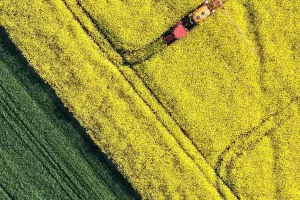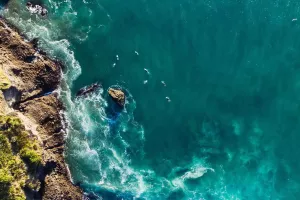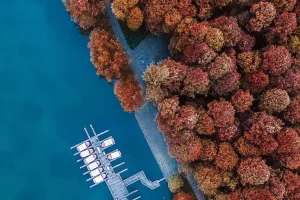The Jungfrau, is one of the main summits of the Bernese Alps, located between the northern canton of Bern and the southern canton of Valais, halfway between Interlaken and Fiesch.
Together with the Eiger and Mönch, the Jungfrau forms a massive wall of mountains overlooking the Bernese Oberland and the Swiss Plateau, one of the most distinctive sights of the Swiss Alps.
The Jungfrau massif, with its three famous peaks – the Jungfrau at 4,158 meters, the Mönch at 4,099 meters, and the 3,970-meter Eiger – has been the goal of climbers since the early 1800s and, more recently, of skiers who head for its 206 kilometers of slopes and runs, all set against the backdrop of the three peaks.
The rack-railroad to the Jungfraujoch opened in 1912, and its upper station is the highest railroad station in Europe at 3,454 meters. Known for their long runs – some as long as 12 kilometers – and reliable deep snow, it's no wonder the three major ski areas draw winter sports enthusiasts from around the world
Although there are plenty of technical climbs available, walking and hiking trails are not just for the intrepid. Some of the most beautiful views are from trails suitable for slow ambling or for young children. The postcard-pretty towns, scenic splendor, and natural attractions all add to the Jungfrau's appeal to tourists in any season. Explore this beautiful region with our list of the top tourist attractions in the Jungfrau Region.
1. Jungfraujoch and Aletsch Glacier:
The highest railroad station in Europe at 3,454 meters, the Jungfraujoch is like a small village, with a hotel, restaurants, research stations, and underground passages leading to an Ice Palace carved from the glacier and to sports venues for skiing and dogsledding.
2. Lauterbrunnen :
The Lauterbrunnen valley extends from Zweilütschinen to the foot of the Breithorn in the Jungfrau massif. The typical high alpine valley is enclosed between sheer rock walls over which several magnificent waterfalls drop in frothing ribbons. Plunging into the village itself are the Staubbach falls, which tumble from an overhanging crag in a sheer drop of 300 meters. The falls inspired Goethe to write Song of the Spirits over the Water, later set to music by Schubert
3. Wengen :
A car-free resort halfway up the Eiger and overlooking the Lauterbrunnen Valley, Wengen can only be reached on foot or on the Wengernalpbahn, a rack railway from Lauterbrunnen that was built in 1893. The town is beautifully set at the foot of the Eiger, Mönch, and Jungfrau and is an ideal base for walks and climbs in the mountains and alpine meadows of the Bernese Oberland
4. Schilthorn and Piz Gloria :
The Schilthornbahn, a 6,967-meter-long cableway, ascends in 34 minutes via three intermediate stations to the Schilthorn, at an elevation of 2,970 meters. The views are spectacular, and the ski trails from here run all the way back to Lauterbrunnen, 12 kilometers below.
5. Skiing and Winter Sports
On the Alpine slopes of the Jungfrau massif's three peaks are 206 kilometers of slopes and runs for skiers and snowboarders, making this region one of the top ski resorts in Europe. Dozens of lifts and cableways give skiers and sightseers access to the mountains, and to runs as long as 12 kilometers.
Beginners will find the slopes near Wengen the best for learning to ski, while experts will find Murren's slopes the most challenging in the Jungfrau region. Grindelwald-First's freestyle superpipe is the favorite for snowboarders.
6. Trümmelbach Falls :
Almost hidden inside the Schwarze Mönch, the Trümmelbach Falls plunge down in five rushing cascades that swirl through a corkscrew-shaped vertical gorge carved out by the meltwaters from the giant ice walls of the Eiger, Mönch, and Jungfrau.
7. Mürren :
At the foot of the Schilthorn, a sunny terrace above the Lauterbrunnen valley, Mürren maintains its 19th-century atmosphere by allowing no private vehicles on its narrow streets. Access to this rustic chalet village is from Lauterbrunnen by funicular to Grütschalp and from there by a 5.5-kilometer narrow-gauge railroad or from Stechelberg by a cableway that goes past waterfalls and craggy rock faces into the center of the village. Wengen, on the rocky plateau opposite, is also accessible by cableway.


